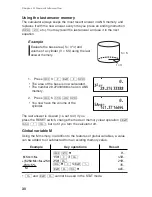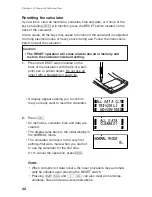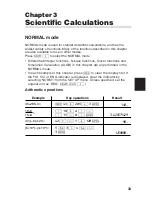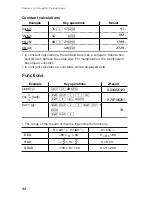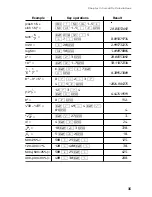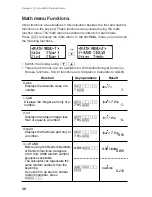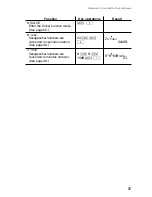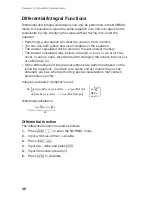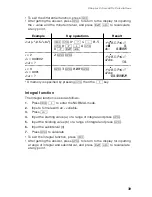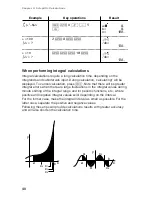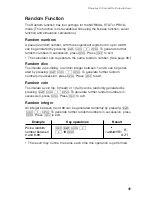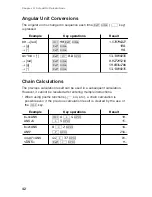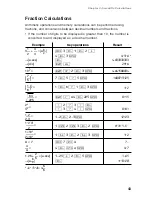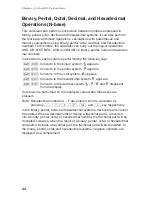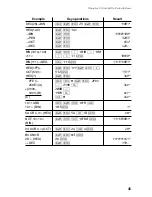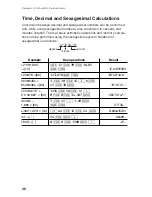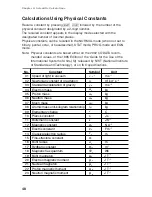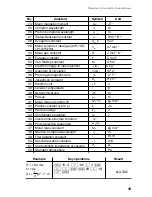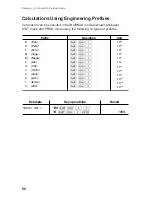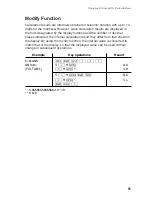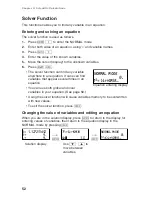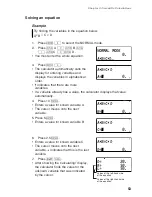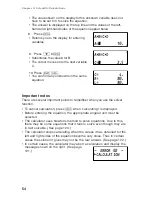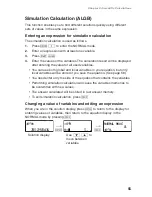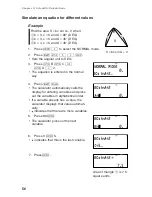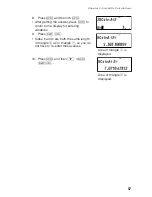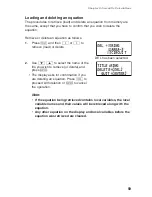
44
Binary, Pental, Octal, Decimal, and Hexadecimal
Operations (N-base)
This calculator can perform conversions between numbers expressed in
binary, pental, octal, decimal and hexadecimal systems. It can also perform
the four basic arithmetic operations, calculations with parentheses and
memory calculations using binary, pental, octal, decimal, and hexadecimal
numbers. Furthermore, the calculator can carry out the logical operations
AND, OR, NOT, NEG, XOR and XNOR on binary, pental, octal and hexadeci-
mal numbers.
Conversion to each system is performed by the following keys:
@
z
: Converts to the binary system. ‘
?
’ appears.
@
r
: Converts to the pental system. ‘
q
’ appears.
@
g
: Converts to the octal system. ‘
f
’ appears.
@
h
: Converts to the hexadecimal system. ‘
6
’ appears.
@
/
: Converts to the decimal system. ‘
?
’, ‘
q
’, ‘
f
’ and ‘
6
’ disappear
from the display.
Conversion is performed on the displayed value when these keys are
pressed.
Note: Hexadecimal numbers A – F are entered into the calculator by
pressing
,
,
m
,
A
,
1
,
l
, and
i
key respectively.
In the binary, pental, octal, and hexadecimal systems, fractional parts cannot
be entered. When a decimal number having a fractional part is converted
into a binary, pental, octal, or hexadecimal number, the fractional part will be
truncated. Likewise, when the result of a binary, pental, octal, or hexadecimal
calculation includes a fractional part, the fractional part will be truncated. In
the binary, pental, octal, and hexadecimal systems, negative numbers are
displayed as a complement.
Chapter 3: Scientific Calculations
Summary of Contents for EL-5230
Page 1: ...PROGRAMMABLE SCIENTIFIC CALCULATOR OPERATION MANUAL EL 5230 EL 5250 ...
Page 2: ......
Page 12: ...10 ...
Page 62: ...60 ...
Page 132: ......

